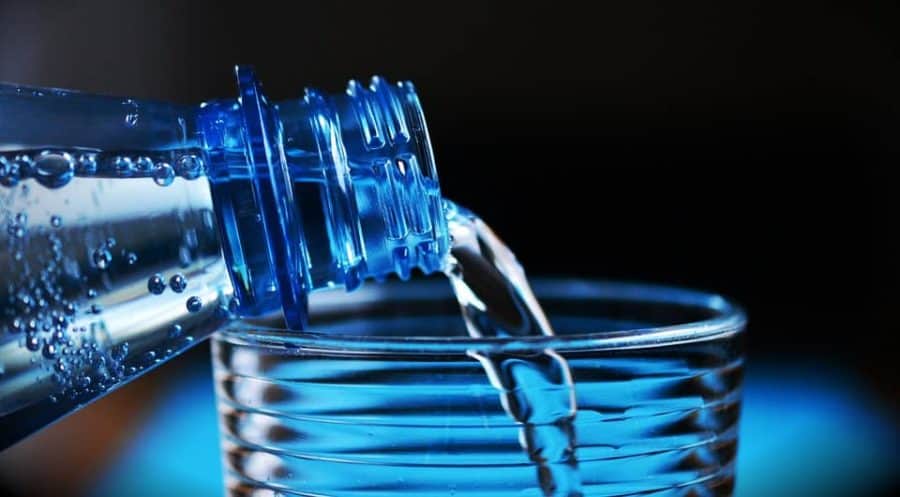After you have exercised on a hot day, a cool glass of water will quench your thirst immediately—even before your body has had a chance to absorb the water.
Yuki Oka, assistant professor of biology and Chen Scholar at Caltech, was curious about why that is, and how the brain processes satiation and pleasure signals related to drinking.
In a new paper, Oka shows that thirst satiation is governed by two independent pathways in the mammalian body and brain. These pathways work together to help keep animals properly rehydrated.
Here is how it works: When you are thirsty and you start drinking a glass of water (or any other liquid), the first parts of your body to interact with that liquid are your mouth and throat. These two areas, known collectively as the oropharyngeal region, are lined with nerves that pass along a drinking signal to neurons in a brain structure called the subfornical organ (SFO). The Oka lab has previously shown that the activation of neurons in the SFO generates the sensation of being thirsty. When the SFO receives a drinking signal, it turns off these thirst neurons.
But the process is not finished yet. The SFO is waiting for a second signal to confirm what it has been told by the throat. In this new study, the team has discovered that the second signal comes from your gut sensing the osmolality, or concentration of water, in the liquid you have ingested. Unlike the signals from your throat, which reveal that you gulped some kind of liquid, the gut-derived signals can show whether the liquid you drank contains water, and, if so, if there is enough water to rehydrate you.
If there is enough water, the SFO keeps its thirst neurons deactivated until your body senses that you again have become dehydrated. However, if the SFO does not get the hydration signal from your gut—maybe because you have been drinking soda instead of water—it turns the thirst neurons back on, and you end up thirsty again.
Vineet Augustine, the first author on the paper and a graduate student in the Oka lab, says this two-fold satiation system is important for driving animals to drink while ensuring they do not drink the wrong thing.
“The gulping signal is important to prevent the ingestion of too much of any liquid that will not hydrate you,” he says. “If you drank salty water, for example, this gulping signal is like a brake that stops you from continuing to drink until the second signal can make sure that what you drank was water.”
Oka says that the existence of these two pathways that stop drinking before body rehydration has been hypothesized for more than 30 years, but his team was the first to identify neurons in the brain that monitor the liquid-gulping and gut osmolality signals.
The researchers separated the two satiation signals by delivering liquid to the mouth and gut independently using a technique called intragastric infusion, explains Haruka Ebisu, a co-first author of this paper and a postdoc in the Oka lab. The technique allowed the team to determine if satiation (thirst quenching) directly causes the sensation of pleasure when drinking. Indeed, when mice drank water they found that there was a robust release of the neurotransmitter dopamine, an indicator of reward-related neural activity. In other words, drinking water is pleasurable to thirsty animals, as expected.
However, this dopamine release was not observed when water was supplied directly to the gut, despite the gut sending thirst satiation signals to the brain.
Oka says that understanding the refreshing feeling that comes from drinking could help researchers understand more problematic pleasure pathways, like those that cause eating disorders in some people.
“As is the case with drinking, we eat because it is pleasurable,” he says. “Sometimes, even if you are not hungry, you eat because of the pleasure you feel. So, if we can separate these pathways completely, then we can maybe manipulate them individually. For example, if we could satiate appetite without stimulating the pleasure pathway, we could regulate overeating. We could possibly also reduce anorexia, which may occur because a person gets too little pleasure from eating.”
The paper describing their findings, titled “Temporally and spatially distinct thirst satiation signals,” was published online by Neuron on May 29 and will appear in the July 17 print issue. Other authors of the paper are Haruka Ebisu, Yuan Zhao, Sangjun Lee, and Brittany Ho of Caltech, and Grace Or Mizuno and Lin Tian of UC Davis. Funding for the research was provided by the National Institutes of Health, the Searle Scholars Program, the Mallinckrodt Foundation, the McKnight Foundation, the Klingenstein-Simons Fellowship Awards, the Uehara Memorial Foundation, and the Japan Society for the Promotion of Science.


